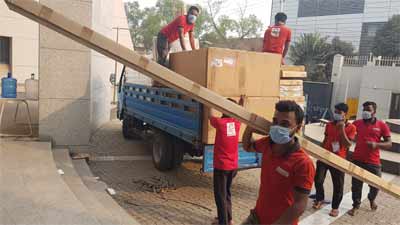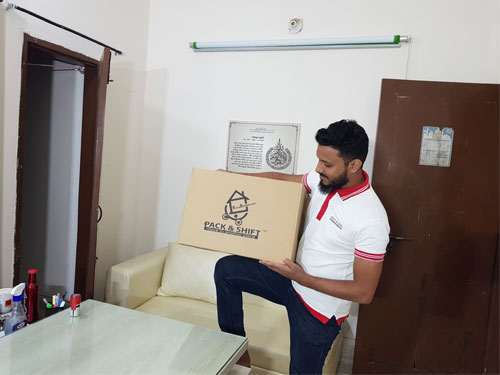Essential Guide to Carton Boxes and Packing Materials: Safeguarding Your Belongings
Boxes and Packing Materials In the world of moving and storage, carton boxes and packing materials are the unsung heroes that ensure the safety and security of our possessions. Whether you’re relocating, storing items, or shipping goods, the right packaging is crucial. This guide dives deep into the essentials of carton boxes and packing materials, offering insights into their varieties, uses, and tips for selecting the best options for your needs.
Section 1: The Importance of Quality Packing Materials
- Protection and Security: Discuss how quality packing materials protect items from damage, dust, and moisture during transport or storage.
- Cost-Efficiency: Highlight how investing in good packing materials can save money in the long run by preventing damage and loss.
- Environmental Considerations: Touch on the environmental impact of packing materials and the importance of choosing sustainable options.

Section 2: Types of Carton Boxes
- Standard Moving Boxes: Describe the common sizes and strengths, including double-walled options for heavier items.
- Specialty Boxes: Introduce boxes designed for specific items like wardrobe boxes, dish packs, and mirror boxes, explaining their features and benefits.
- Custom Boxes: Explain when and why you might need custom-sized boxes for irregularly shaped or oversized items.
Section 3: Selecting the Right Carton Boxes
- Assessing Your Needs: Offer advice on evaluating your packing needs based on the type, size, and fragility of items.
- Size Matters: Discuss the importance of choosing the right box size to prevent overpacking or underpacking.
- Quality and Durability: Provide tips on identifying high-quality boxes, such as weight capacity and crush resistance.
Section 4: Understanding Packing Materials
- Bubble Wrap: Detail its uses for wrapping fragile items and filling voids in boxes to prevent movement.
- Packing Peanuts and Foam: Compare and contrast these materials in terms of cushioning and protection, including eco-friendly options.
- Packing Paper and Blankets: Explain their uses for wrapping and padding, highlighting the benefits of ink-free paper for avoiding stains.
Section 5: Best Practices for Packing with Carton Boxes and Materials
- Layering Technique: Guide on creating layers in boxes for stability, starting with heavier items at the bottom.
- Labeling Strategy: Emphasize the importance of labeling boxes clearly with contents and handling instructions.
- Sealing for Security: Advice on the best tapes for sealing boxes and techniques for reinforcing box bottoms and tops.
Section 6: Eco-Friendly Packing Solutions
- Recycled and Recyclable Materials: Highlight the availability and benefits of using recycled carton boxes and biodegradable packing materials.
- Reusable Options: Discuss the advantages of using plastic bins and other reusable containers for certain moves.
- Disposal and Recycling Tips: Offer advice on properly disposing of or recycling packing materials after a move.
Section 7: Where to Find Carton Boxes and Packing Materials
- Purchasing Options: List options including moving companies, storage facilities, online retailers, and local stores.
- Free and Low-Cost Sources: Share tips on finding free boxes and materials through community groups, retail stores, and recycling centers.
Choosing the Right Boxes
The cornerstone of any packing strategy is selecting the appropriate boxes. The market offers a vast array of options, tailored to different needs and items.
- Standard Moving Boxes: Available in sizes from small to large, these boxes are versatile and suitable for a wide range of household items.
- Specialty Boxes: For items that require extra protection or a unique fit, specialty boxes like wardrobe boxes, dish pack boxes, and mirror/art boxes are invaluable.
- Eco-Friendly Options: Consider sustainable options such as recycled or biodegradable boxes to minimize environmental impact.
Essential Packing Materials
Beyond boxes, a variety of packing materials play crucial roles in protection and organization:
- Bubble Wrap: Ideal for wrapping fragile items, providing cushioning and shock absorption.
- Packing Peanuts: Fill empty spaces in boxes to prevent items from shifting during transport.
- Packing Paper: Use acid-free paper to wrap dishes, glassware, and other delicate items, protecting them from scratches and dust.
- Stretch Wrap: Securely wraps furniture and large items, protecting surfaces and keeping drawers and doors in place.
- Tape: High-quality packing tape is essential for sealing boxes securely. Opt for a tape dispenser for ease of use.
Packing Tips for a Smooth Move
- Label Clearly: Mark each box with its contents and the room it belongs to for efficient unpacking.
- Pack Room by Room: Tackle one area at a time to stay organized and prevent items from being misplaced.
- Protect Fragile Items: Use bubble wrap and packing paper generously to safeguard breakables.
- Don’t Overpack: Keep boxes at a manageable weight to prevent injuries and ensure they can be moved safely.
Storage Solutions
For items that won’t be moving but need to be stored, the right boxes and packing materials are just as important. Moisture-resistant and sturdy boxes are ideal for long-term storage, protecting against environmental damage.
Conclusion
Whether you’re moving to a new home or organizing your current space, the right boxes and packing materials are key to protecting your belongings. By choosing suitable boxes, utilizing the right materials, and employing strategic packing techniques, you can ensure a smooth transition for your items, from one location to the next or into storage. Remember, the time and effort invested in proper packing are invaluable in preserving your valuables’ integrity and condition.


